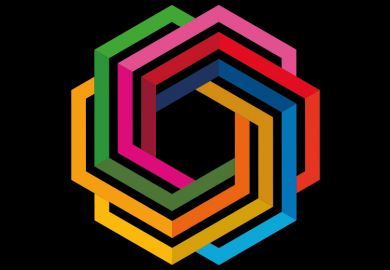This ranking focuses on universities’ research related to water, their water usage and their commitment to ensuring good water management in the wider community.
View the methodology for the Impact Rankings 2023 to find out how these data are used in the overall ranking.
Metrics
Research on clean water and sanitation (27%)
- Proportion of papers in the top 10 per cent of journals as defined by Citescore (10%)
- Field-weighted citation index of papers (10%)
- Number of publications (7%)
This focuses on research that is relevant to clean water and sanitation, measuring the proportion of papers in the top 10 per cent of cited journals, citation impact and the volume of research produced. The field-weighted citation index is a subject-normalised score of the citation performance of publications.
The data are provided by Elsevier’s Scopus dataset and based on a query of keywords associated with SDG 6 (clean water and sanitation) and supplemented by additional publications identified by artificial intelligence. The dataset includes all indexed publications between 2017 and 2021. The data are normalised across the range using Z-scoring.
Water consumption (19%)
- Water consumption tracking (9.5%)
- Water consumption per person (9.5%)
This is defined as the volume of water used per person on campus per year. It includes water used by students and employees and is based on full-time equivalents. The first indicator asks if the university measures the total amount of treated and extracted water used; a higher score is awarded if this is measured across the whole university. If the university does not measure this value it cannot score for the second indicator.
The data were provided directly by universities and normalised across the range using Z-scoring.
Water usage and care (23%)
- Process to treat wastewater (4.6%)
- Process to prevent polluted water entering water system (4.6%)
- Free drinking water for students, staff and visitors (4.6%)
- Building standards to minimise water use (4.6%)
- Landscape planting to minimise water usage (4.6%)
The evidence was provided directly by universities, evaluated and scored by THE and not normalised.
Water reuse (12%)
- Policy to maximise water reuse across university (6%)
- Measure the reuse of water across university (6%)
The evidence was provided directly by universities, evaluated and scored by THE and not normalised.
Water in the community (19%)
- Educational opportunities for local communities to learn about good water management (3.8%)
- Promote conscious water usage on campus and in wider community (3.8%)
- Support water conservation off campus (3.8%)
- Sustainable water extraction technologies on associated university grounds on and
off campus (3.8%) - Cooperate with local, regional, national or global governments on water security (3.8%)
The evidence was provided directly by universities, evaluated and scored by THE and not normalised.
Evidence
When we ask about policies and initiatives – for example, the existence of mentoring programmes – our metrics require universities to provide the evidence to support their claims. In these cases, we give credit for the evidence, and for the evidence being public. These metrics are not usually size normalised.
Evidence is evaluated against a set of criteria, and decisions are cross-validated where there is uncertainty. Evidence need not be exhaustive – we are looking for examples that demonstrate best practice at the institutions concerned.
Time frame
In general, the data used refer to the closest academic year to January to December 2021. The date range for each metric is specified in the full methodology document.
Exclusions
The ranking is open to any university that teaches at either undergraduate or postgraduate level. Although research activities form part of the methodology, there is no minimum research requirement for participation.
THE reserves the right to exclude universities that it believes have falsified data, or are no longer in good standing.
Data collection
Institutions provide and sign off their institutional data for use in the rankings. On the rare occasions when a particular data point is not provided, we enter a value of zero.
View the full methodology for the THE Impact Rankings 2023 here.
The THE Impact Rankings 2023 will be published at 11:30am BST on 1 June.
Register to continue
Why register?
- Registration is free and only takes a moment
- Once registered, you can read 3 articles a month
- Sign up for our newsletter
Subscribe
Or subscribe for unlimited access to:
- Unlimited access to news, views, insights & reviews
- Digital editions
- Digital access to THE’s university and college rankings analysis
Already registered or a current subscriber? Login



